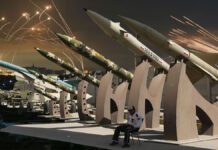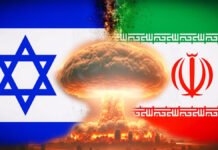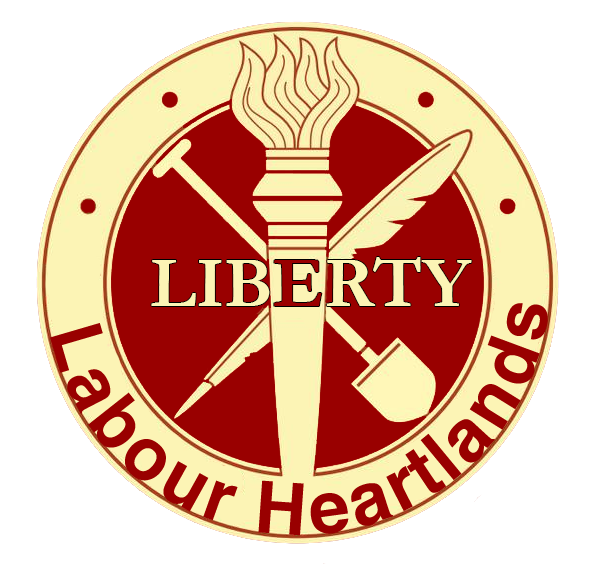Crowds in Tehran call on leadership to resign after Tehran admits it mistakenly downed airliner with 176 people aboard.
In a second day of protests the Iranian people turn up heat on their leaders. Protesters in Iran’s capital gathered on mass chanting: “They are lying that our enemy is America, our enemy is right here,” the demonstrators chanted as they took to the streets of Tehran. At the same time, the UK ambassador has denied taking part in the protests and decried his arrest, saying it was illegal.
Tehran admitted to accidentally shooting down a Ukrainian airliner. Protesters in the country are demanding those responsible be held to account.
The plane, en route to the Ukrainian capital, Kyiv, was shot down near Tehran last Wednesday, shortly after Iran had launched missiles at two airbases housing US forces in Iraq.
Those strikes were a response to the US killing of senior Iranian commander Qasem Soleimani in a drone strike in Baghdad on 3 January.
Dozens of Iranians and Canadians, as well as nationals from Ukraine, the UK, Afghanistan and Sweden died on the plane.
Ukrainian President Volodymyr Zelensky said Kyiv insisted on an official apology by Iran and expected Tehran to punish those responsible.
Ukraine has demanded Tehran pay compensation for the crash. Kyiv said it is coordinating the next steps in the legal process with Canada, the U.K. and Sweden, which all had citizens on board the plane.
“We will do everything to assist the families of victims. They deserve truth and justice,” Ukrainian diplomat Oleksii Makeiev said in a Twitter post on Sunday.
The Iranian acknowledgement will lessen the importance of an international investigation, which was just starting to take shape, as it rules out the role of any mechanical issue resulting in the disaster.
The downing of the Ukrainian jet isn’t the first time tensions between the U.S. and Iran have led to an aviation tragedy. In 1988, the U.S. Navy’s USS Vincennes warship downed Iran Air Flight 655 with an air-defence missile.
U.S. officials said they mistook the Airbus SE A300 airliner for a warplane they feared would attack the ship. All 290 people, mostly Iranian, on the plane died, prompting an outpouring of national grief in Iran. The U.S. agreed to pay compensation to Iranian victims nearly a decade after the incident.
US kills Iranian commander Qassem Soleimani in targeted airstrike
US kills Iranian commander Qassem Soleimani in targeted airstrike
What happened at Sunday’s protests?Demonstrators attended new protests despite a large deployment of security forces.
The accident challenges the Iranian government’s narrative that it showed strength in threatening US forces in the region in response to a US drone strike in Baghdad killing Revolutionary Guard commander Qassem Soleimani, only to shoot down a jetliner filled with mostly Iranian citizens and dual nationals.
It also takes the wind out of the public anger at the US and nationalist sentiment the government had sought to capitalise on following Soleimani’s death, with hundreds of thousands joining processions to honour the general. In another tragedy, dozens of people were killed in a stampede at his funeral.
Even as the military and government recognised the accident and offered apologies on Saturday, thousands of Iranians demanding that those responsible for the crash be held to account protested in the capital, Tehran, as well as Shiraz, Esfahan, Hamedan and Orumiyeh.
Unverified videos posted on Twitter showed protesters burning images of Soleimani and demanding Supreme Leader Ayatollah Ali Khameini step down, while in others police dispersed demonstrators with tear gas. At one protest in front of Amir Kabir University in Tehran, Britain’s ambassador was briefly arrested for inciting anti-government protest, Tasnim news agency reported.
Mehdi Karroubi, a leader of the 2009-10 Green Movement, who is now living under house arrest, called on Khamenei to step down over his handling of the airliner shootdown.
In a statement posted online, the former parliamentary speaker and presidential candidate questioned when Khamenei was informed about the accident, and why there was a delay in notifying the public about the real reasons for the crash.
Protests spread to several other cities on Sunday, including Kermanshah, Ahvaz, Rasht, Yazd, Semnan and Mashhad, according to IRNA, a state news agency, and Iranian rights activists who circulated unverified videos on social media. Videos sent to The Wall Street Journal showed two young women who had been injured by gunshots, purportedly by Tehran’s Azadi Square. The videos couldn’t be independently verified, but appeared to be from Sunday.
While the protests have remained relatively small, with participants seemingly numbering in the hundreds, the public rebuke reflects the challenges Tehran faces in trying to keep a lid on months of unrest fomented by various social classes and ethnic backgrounds as the economy reels and foreign pressure mounts.
“The state’s legitimacy is severely challenged by people, regardless of their background,” said Alam Saleh, an Iran expert and lecturer in Middle East politics at Lancaster University in England. He said Tehran would need to enact reforms to show it is listening. “If not, [Iran] will have prolonged protests.”
With its main revenue sources squeezed by U.S. sanctions intended in part to force it to shrink its Mideast military footprint, and few economic tools available to provide economic relief, Iran has stepped up its suppression of domestic dissent. A security crackdown in November—Iran’s deadliest in decades—killed hundreds, rights groups said, after protesters objected to austerity measures that raised fuel prices.
Support Independent Journalism Today
Our unwavering dedication is to provide you with unbiased news, diverse perspectives, and insightful opinions. We're on a mission to ensure that those in positions of power are held accountable for their actions, but we can't do it alone. Labour Heartlands is primarily funded by me, Paul Knaggs, and by the generous contributions of readers like you. Your donations keep us going and help us uphold the principles of independent journalism. Join us in our quest for truth, transparency, and accountability – donate today and be a part of our mission!
Like everyone else, we're facing challenges, and we need your help to stay online and continue providing crucial journalism. Every contribution, no matter how small, goes a long way in helping us thrive. By becoming one of our donors, you become a vital part of our mission to uncover the truth and uphold the values of democracy.
While we maintain our independence from political affiliations, we stand united against corruption, injustice, and the erosion of free speech, truth, and democracy. We believe in the power of accurate information in a democracy, and we consider facts non-negotiable.
Your support, no matter the amount, can make a significant impact. Together, we can make a difference and continue our journey toward a more informed and just society.
Thank you for supporting Labour Heartlands











